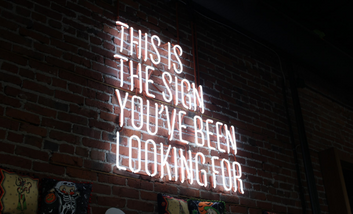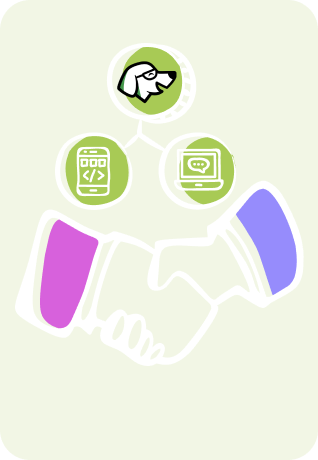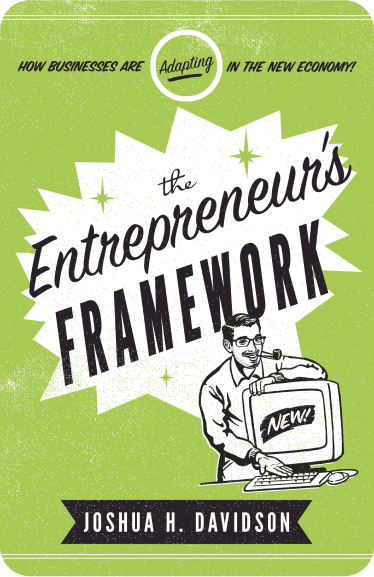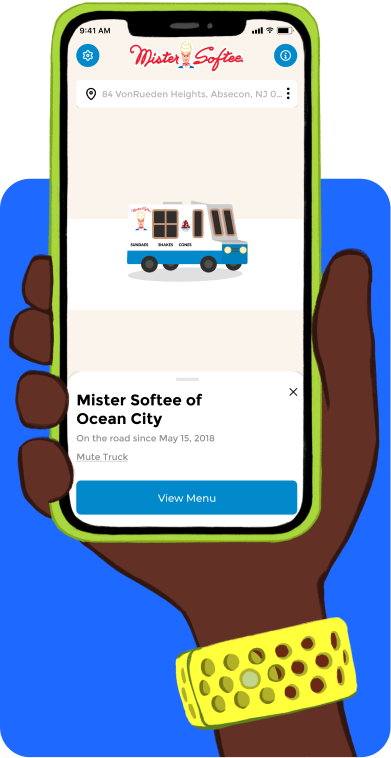Right now, the global mobile app market is booming. Many genres of apps, such as games, have exploded. For example, the revenue of mobile iOS games alone nearly quadrupled between 2016 and 2023. Many businesses want to take advantage of this boom with mobile app monetization.
This makes sense. As a result of the pandemic, people turned to apps to work, play, and connect like never before. Many even started mobile gaming for the first time and have kept up with it since lockdowns ended.
More people want apps. So, of course, more businesses want to profit from this trend.
However, just making an app alone does not guarantee success. You need to build something from the ground up that can help you achieve your goals.
As it costs money to produce apps, generating profit should be a part of the picture after launch.
Let’s take a look at the mobile app market and how you can monetize your app.
The Importance of Mobile App Monetization
The mobile app market is booming, but it is also highly competitive.
While it’s estimated that the average US adult spends hours on apps each and every day, they actually do not use most of the apps on their phone.
Creating an app is not cheap. On average, the cost of developing and launching an app is about $270,000.
However, it is important to note that this varies widely according to the agency you work with and the complexity of the app that you need.
Keeping in mind the costs, the majority of apps that are launched do not reach 1000 downloads. This is why it’s so critical to launch an app as part of a strategy, which includes mobile app monetization.
In addition, If you run a startup, and you are planning to pitch your mobile app to investors, having a monetization plan in place will give them confidence in your venture.
ROI should always be the goal.
So, let’s explore some ways you can make a return from your investment.
Understand Your Options
App stores, technology, and consumers are changing all the time. If you want your app to succeed, you must keep this in mind as you explore different channels that can drive revenue.
Within the last year or so, Apple and Google even started removing apps that have not been updated recently enough, sometimes without warning. Based on this alone, your app will require maintenance throughout its existence.
This maintenance means that you cannot release your app as a one-off product and forget about it. If you want it to remain available in major app stores, it will take resources to keep it functional and available.
This is why considering monetization from the ground up is key. It will cost money to create your dream app, as well as to keep it running. As such, it makes sense that developers would also focus on generating revenue from all their hard work.
The most common and obvious ways of mobile app monetization are through in-app purchases or by using a pay-to-download model. However, there are actually many other ways that you can monetize your app.
One way that’s picking up steam is subscriptions. This benefits developers because it allows them to earn a steady recurring monthly income from their apps.
Some other developers want to keep their apps free for users, but still monetize them. This is where in-app ads and the “freemium” model come in. Freemium apps offer a free tier to users, with options to pay for more features, premium versions, or a subscription.
When your app has a large enough user base, you may want to investigate sponsorship opportunities. Often, these will be displayed on a splash screen when the app is opened.
Which Monetization Path Is Right For You?
How you can monetize your app largely depends on what it does. For example, if your app is a mobile marketplace, you can charge service fees.
Some apps even accept donations. If your app is based on a brand with a loyal audience, you may want to sell them t-shirts or other merchandise. If your app empowers others to earn income, you can charge a small portion of that income.
In-app purchases are also a prevalent and powerful mobile app monetization tool. Users pay real money for things like digital coins, outfits for characters, an ad-free experience, or gameplay advantages.
Some apps even allow users to pay to turn off ads within them. If your app is a mobile game, for example, this is something to explore. Here are the main ways businesses are monetizing apps in the US.
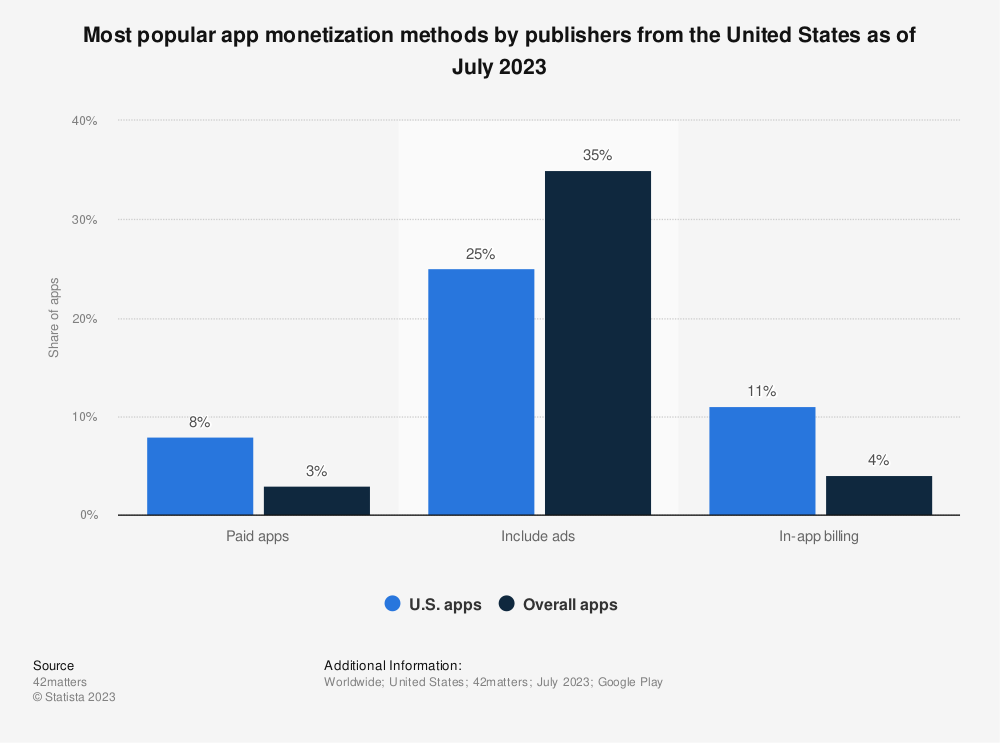
The Main Types of In-App Purchases
There are three main types of in-app purchases: Consumable, Non-consumable, and Feature Subscription.
Consumable in-app purchases include things like in-app currency, items, lives, and other content that can be used up and repurchased many times. For example, in Candy Crush Saga, users can buy gems to spend.
Non-consumable premium content is purchased or unlocked once, and can be used throughout the entire user lifetime.
Depending on the type of app, this might include things like character skins, outfits, photo filters, or other upgrades. For example, the smash-hit game Fortnite allows users to buy character skins.
Feature subscription allows users to subscribe to specific features of an app. This could be a daily or weekly delivery of valuable items, for example.
When deciding how to monetize your app, it is important to keep in mind that competition is very high. This likely plays a part in user retention across niches being quite low.
Here is a formula that you can use to understand the retention rate of your own app. This is definitely something to watch. Any sudden increases or decreases are worth noting.
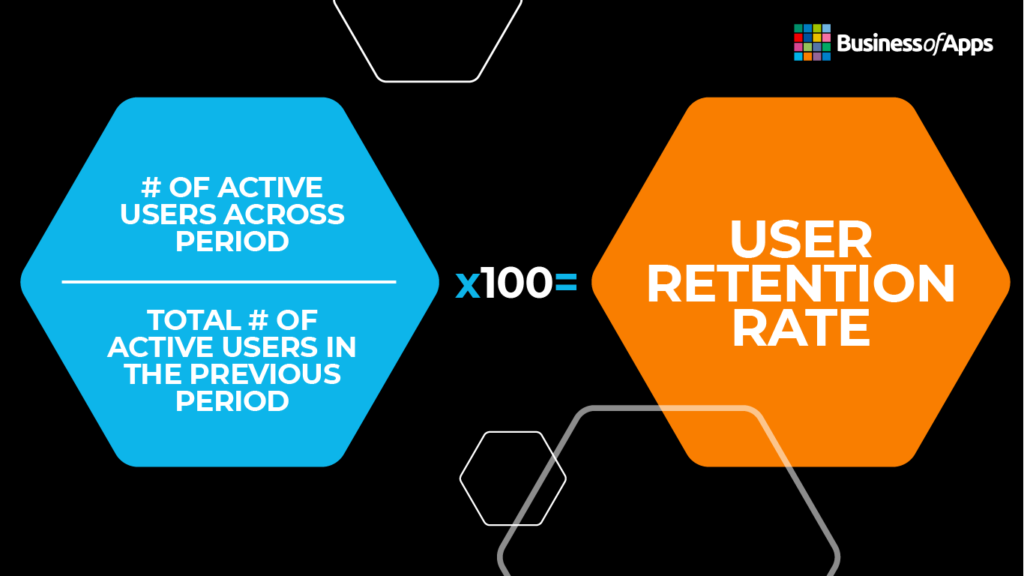
Fully Leverage Your Ad Inventory
Header bidding enables customers to collect bids from multiple demand sources at once. This has been in beta for years and early adopters are already starting to see the benefits of it.
According to Debra Fleenor, president of Adapex:
“Header bidding for mobile apps is getting sophisticated and actionable, after some time in beta. At a fundamental level, header bidding simply increases competition for your inventory which increases the revenue you earn for the same inventory.”
Essentially, pursuing header bidding lowers the costs of fulfilling your ad inventory. On top of this, it boosts your revenue.
Think About What Your Advertisers Want
Marketing your ad inventory’s value proposition is critical.
Your advertisers will be able to understand the important parameters to their campaigns. This includes things like the demographic and geographical information of your users.
To boost your chances, state your parameters clearly in your ad request. Also, you want to make it as easy as possible for advertisers to track the viewability of your ads.
This will give them a full picture of how the ads are impacting their business. You can do this by using an Open Measurement SDK.
It is also very important that whatever solution you choose takes real steps to combat ad fraud. According to Fleenor, the best option is to prioritize first-party data.
“We’re embarking on a cookie-less future, which means the ability to personalize ads based on key data is at risk if you’re not affiliating with partners that are taking first-party data seriously.”
Final Thoughts on Mobile App Monetization
Before you build and launch your app or pitch it to investors, you should know how you want to monetize it. This will be a critical part of its success.
Now, which method is right for you? It depends largely on what kind of app you will create. It also depends on how large of an audience it has and who is using it.
Also, keep in mind, that you can pick multiple monetization methods. For example, it is quite common to see an app use in-app ads on its free version, but also provide a subscription-based ad-free version. Spotify is a great example of this.
What do you think? What methods of monetization do your favorite apps use? Comment below!
Since 2009, we have helped create 350+ next-generation apps for startups, Fortune 500s, growing businesses, and non-profits from around the globe. Think Partner, Not Agency.
Find us on social at #MakeItApp’n®





